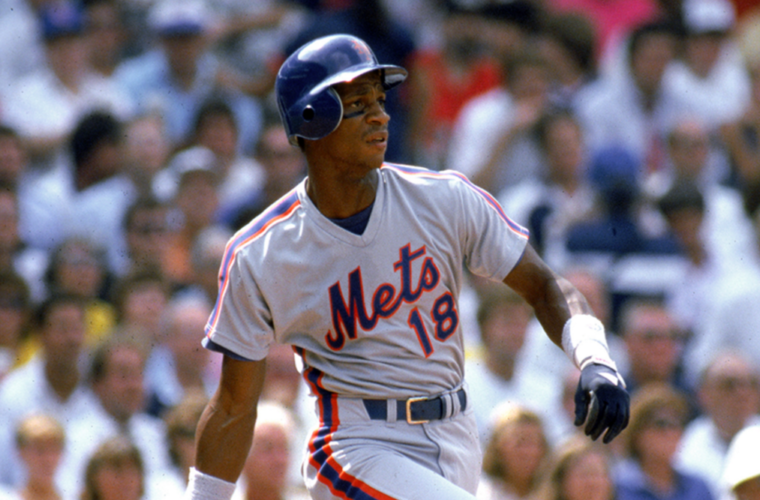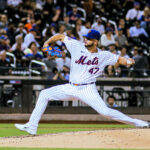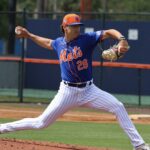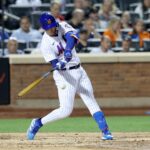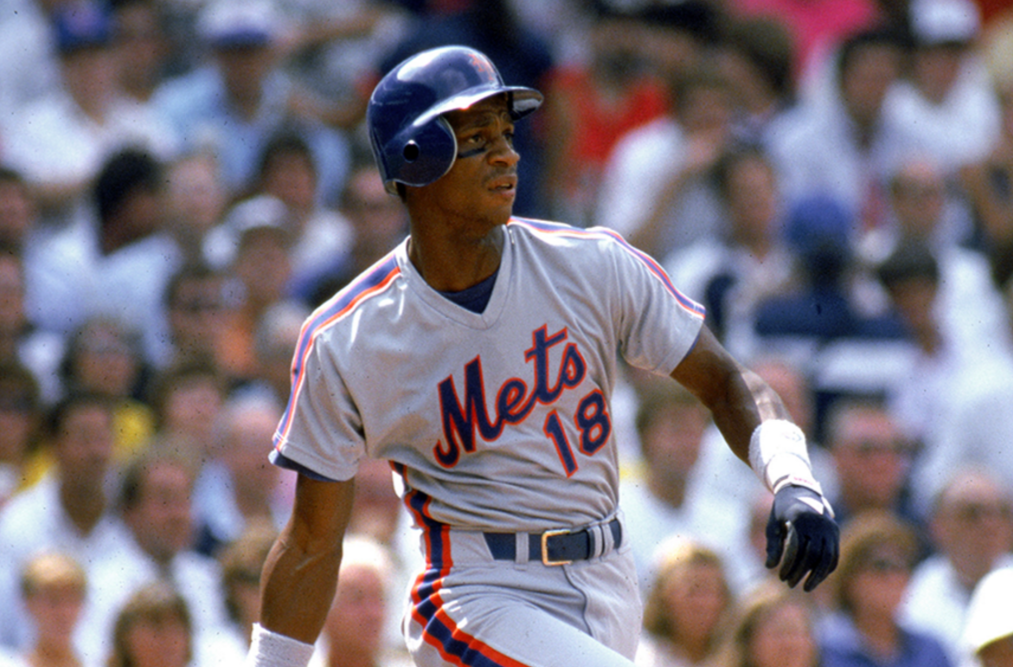
Over the course of New York Mets history, there have been 235 different players who have tied their cleats and jogged out to play right field. Of that group, only a few have left their mark on the team across the course of an entire season.
From the days of Richie Ashburn and Joe Christopher, to the late 60’s with Ron Swoboda. Rusty Staub burst onto the scene in the early 1970’s, with his 1975 season breaking the then Mets record for RBIs with 105.
In 1976, after Staub was traded to the Tigers, Dave Kingman broke the then-club record with 37 home runs. And of course you cannot forget the near-decade of outstanding play in right field from Met-great Darryl Stawberry.
Just last season, Michael Conforto, who played the majority of his games in right, smashed 33 home runs and drove in 92 runs.
With all that being said, there has been plenty of talented right fielders across Mets history. Still there a five seasons, in my opinion, that stand above the rest. These rankings are based on the players impact on the team and their offensive/defensive stats for said season.
Our list begins in the late 1970’s.
5. Joel Youngblood – 1979

On the same infamous day that Mets fans waved goodbye to Hall of Fame pitcher Tom Seaver, they also welcomed a new player from the Cardinals in a separate trade. That player was Joel Youngblood.
Youngblood had spent six seasons in the Cincinnati Reds farm system before making his debut in 1976. He batted .193 for the Reds during that season, before spending half of the 1977 season with the Cardinals, in which he batted only .185. In June, the Mets acquired him for Mike Phillips.
Once he came to the Mets, Youngblood began to come into his true form. He hit .253 in the remainder of the 1977 season, and .252 over 113 games in the next season.
In 1979, he had the best season of his Mets career. Youngblood played in 158 games, and slashed .275/.346/.436, and led the team in doubles with 37. He hit leadoff in 51 of those games, still knocking in 60 RBIs with 16 home runs. His average on balls in play sat at nearly .300, and his WRC+ sat high above average at 116. Defensively, he was spectacular, putting up 6.8 dWAR, with eight outfield assists.
4. Brandon Nimmo – 2018
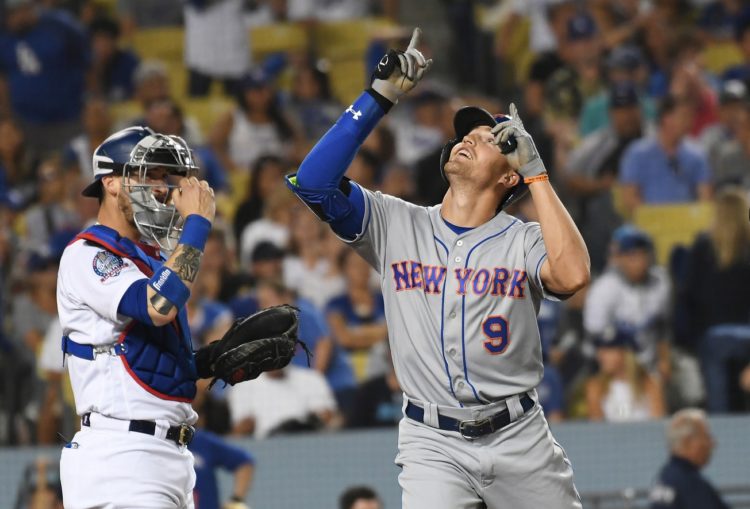
In the fourth spot sits the hit-by-pitch king, Brandon Nimmo. After an injury-ridden 2017, which included a collapsed lung, Nimmo rebounded and provided Mets fans with their first glimpse of how high the young Wyomingite’s ceiling really was.
He played in 140 games in 2018, 62 in right field, and racked up 113 hits for a .263 batting average. What was even more impressive was his off-the-charts on-base percentage, which rose to team-best .404 clip.
He walked in 15% of his plate appearances, leading the team in walk rate. Nimmo’s tendency to be hit by the pitch is always concerning in regards to injuries, but is great when it comes to getting on-base. Nimmo led all batters in the MLB, getting hit by 20 pitchers. Nimmo also found his power stroke, crushing 17 home runs and slugging .483, making for an .886 OPS.
Nimmo’s 4.2 bWAR led all Mets position players in 2018.
3. Curtis Granderson – 2015
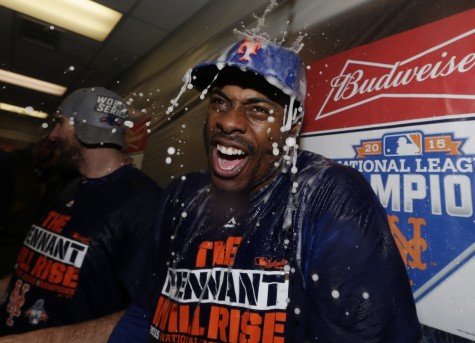
At No. 3 we remain near the present day with fan-favorite Curtis Granderson. After his explosion with the Yankees that included back-to-back 40-homer seasons, he was signed to a four-year deal with the Mets.
After a down 2014, which saw him hit just 20 home runs, he rebounded in 2015. Granderson put up his highest average since 2011, at .259 with an .851 OPS, and smashed 26 home runs.
His 150 hits led the team and his 70 RBIs trailed just Lucas Duda and Daniel Murphy’s 73 RBIs apiece. Most importantly, Granderson’s leadership was crucial to a Mets team that won the NL East for the first time since 2006. He also provided a big boost defensively, with a 8.2 UZR in right field and nine outfield assists.
In the playoffs, Granderson continued to excel, hitting .389/.476/.500 with five RBIs in New York’s five-game series victory against the Los Angeles Dodgers in the NLDS.
While the Mets offense struggled as a whole in the World Series against the Kansas City Royals, Granderson did not, hitting three home runs in five games. Although the Mets lost the World Series, Granderson was a key component in helping the team get there.
2. Darryl Strawberry – 1987
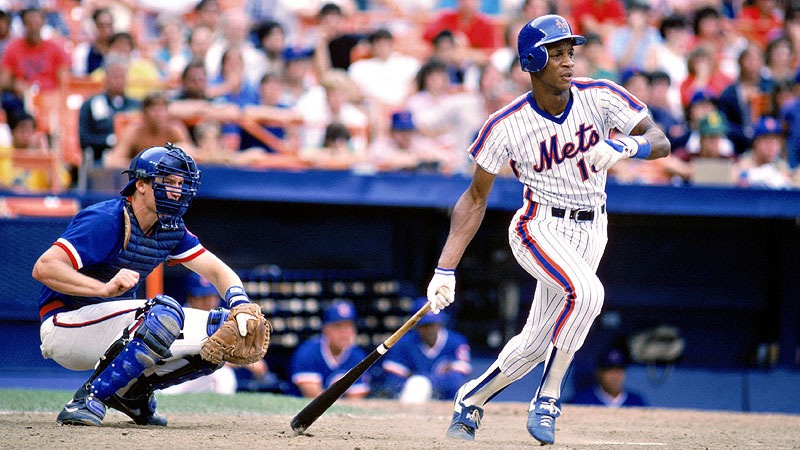
I had to finalize the bottom half of this list with the homegrown talent of Darryl Strawberry, who helped lead the Mets to a 1986 World Series title.
But, his best seasons in right field did not come during the miracle run of ‘86. They came after, starting in 1987.
That year, he hit for a career-high .284 average, and an even more impressive .981 OPS. His 39 home runs led the team, as did his 104 RBI’s and 36 stolen bases. Strawberry became the 10th player in MLB history to join the 30-30 club.
Strawberry’s 1987 season also saw him see the most pitches of his career. He walked a career-high 97 times and his 15.2 BB% led the team. His WRC+ sat at an unbelievable 159, a number that he repeated in 1988 as well. Strawberry also finished with a 5.5 fWAR.
1. Darryl Strawberry – 1990
After a sub-par 1989, Strawberry rebounded in 1990, posting his highest batting average since 1987 at .277.
His power numbers shot back up, as he once again nearly eclipsed 40 homers, this time resting at 37. His 108 RBI’s were a career-high, and he still stole 15 bases. Strawberry lowered his K% by almost two whole points compared to the previous seasons, and had a .879 OPS.
Unfortunately, the Mets faced some heavy competition in the NL East, and ended up finishing second behind the Pirates for the division title. Still, Strawberry’s season was incredible, and he finished third in MVP voting.
What really separates Strawberry’s 1990 season over the other great right field campaigns in his career (and in the history of the franchise) is his incredible defense in right field.
According to Fangraphs, Strawberry’s fielding runs above average sat at a career-best mark of 18. He made just three errors in over 250 attempts and used his strong left arm to record 10 outfield assists. Compare that to his 1987 season, in which his fielding runs above average was -9 and it is clear which year was better of the two.
When looking at both defense and offense, Strawberry’s 1990 season was the best combination of the two that the Mets have ever seen from a right fielder. Strawberry’s fWAR ended up being 6.5 that year, which is the highest mark he recording across his 17-year career.


